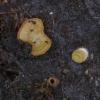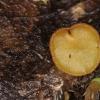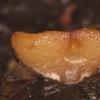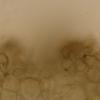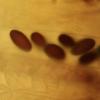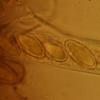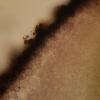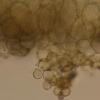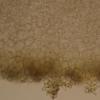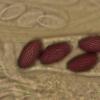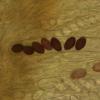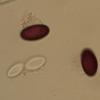
11-11-2025 20:16
Bohan JiaHi, lastly I have found these tiny yellow decayin

09-11-2025 13:20
Hello.A tiny ascomycete, appearing as erupting gra

08-11-2025 00:29
 Francois Guay
Francois Guay
I found this species in Quebec, Canada, on herbace

04-11-2025 09:07
Hello.A suspected Hymenoscyphus sprouting on a thi

04-11-2025 12:43
 Edvin Johannesen
Edvin Johannesen
Hi! One more found on old Populus tremula log in O
Ascobolus cf. foliicola
Zuzana Sochorová (Egertová),
28-06-2022 20:12
 Hello,
Hello,I repeatedly collect a foliicolous Ascobolus in one locality in Moravia (200 m a.s.l., on decaying, very wet leaves of Alnus and Salix, close to the Morava river).
First I identified it as Ascobolus foliicola, but now I am in doubts whether the identification is correct.
The features highlighted by van Brummelen as important for distinguishing A. foliicola and A. denudatus are the following ones:
* stalked receptacle (foliicola) vs. sessile receptacle (denudatus) - I would consider my apothecia rather sessile or only shortly stipitate
* margin permanently furfuraceous (foliicola) vs. soon smooth (denudatus) - here my find fits better A. denudatus
* excipular warts consisting of subglobose and pyriform cells (foliicola) vs. only subglobose cells (denudatus) - I can see a few pyriform cells, but the majority is subglobose
Ornamentation of ascospores clearly fits better A. foliicola, at least when judging from van Brummelen´s illustrations.. Their dimensions are (18.1)18.5-20 (20.4) × 9.7-10.9) µm
Q = 1.8 -1.9
Me = 19.2 × 10.3 µm
How would you determine it?
Zuzana
Zuzana Sochorová (Egertová),
28-06-2022 20:13
Till Lohmeyer,
29-06-2022 10:05
Re : Ascobolus cf. foliicola
Good morning, Zuzana -
comparing van Brummelen's illustrations 40 c (foliicola) and 41 (denudatus) you will note a remarkable difference: The spores of foliicola look like "drawn by a trembling hand", those of denudatus don't. Thus, I'm pretty sure, your fungus should be A. foliicola.
Best regards from Bavaria
Till
comparing van Brummelen's illustrations 40 c (foliicola) and 41 (denudatus) you will note a remarkable difference: The spores of foliicola look like "drawn by a trembling hand", those of denudatus don't. Thus, I'm pretty sure, your fungus should be A. foliicola.
Best regards from Bavaria
Till
Zuzana Sochorová (Egertová),
29-06-2022 17:48

Re : Ascobolus cf. foliicola
Hello Till,
thank you very much!
Zuzana
thank you very much!
Zuzana
Nicolas VAN VOOREN,
30-06-2022 16:00

Re : Ascobolus cf. foliicola
Hello.
A. denudatus can be excluded because its ascospores always show some pustules.
In the other hand, I do not recognize A. foliicola I used to collect, but I do not have any other idea.
A. denudatus can be excluded because its ascospores always show some pustules.
In the other hand, I do not recognize A. foliicola I used to collect, but I do not have any other idea.
Zuzana Sochorová (Egertová),
01-07-2022 18:14

Re : Ascobolus cf. foliicola
Thank you :-)

